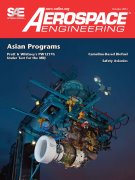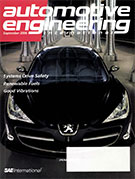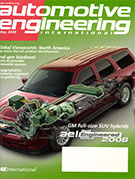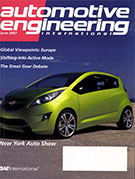Magazine

SAE Off-Highway Engineering 2012-11-08
2012-11-08
Biofuel opportunities and pitfalls Annual growth in biofuels has been strong but is expected to slow in the near future. User interfaces going mainstream Off-highway HMIs use consumer technologies to add functions, simplify tasks. Reducing the environmental impact of hydraulic systems OEMS and their suppliers are creating new hydraulic systems and components, using new fluids and remanufacturing to save energy and reduce the environmental impact of off-highway equipment. Multiple controllers add to EV complexity Model-based design has revolutionized the way products are developed, with design shifting from parts to the whole.



















